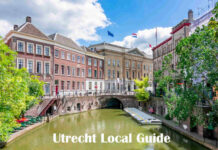As Panama navigates the vibrant pulse of October 2025, its citizens are balancing economic growth with the pressures of rising costs. With inflation at 3.1%, according to the National Institute of Statistics, everyday expenses like fuel (up 10% since 2024) and housing (averaging $750 monthly in urban areas) are testing household budgets. From the bustling streets of Panama City to the serene farms of Coclé, government support programs offer a lifeline for families, entrepreneurs, and seniors. This guide empowers you with practical steps, inspiring stories, and clear strategies to access these benefits, helping you build financial stability in a dynamic nation. With Panama’s innovative and inclusive aid systems, you can turn challenges into opportunities, and we’ll show you how to make it happen.
Panama’s economy, fueled by the Panama Canal’s $5.2 billion annual revenue, is set for a 5.1% GDP growth in 2025, driven by logistics and tourism. Yet, stark contrasts remain—poverty rates hit 42% in rural Darién, while urban centers face rent spikes. The Ministry of Social Development (MIDES) counters these with a $1 billion aid framework, reaching 600,000 beneficiaries through cash transfers, digital vouchers, and skill-building initiatives. These programs blend technology and accessibility to ensure no one is left behind, from indigenous communities to gig workers. To seize these opportunities, staying informed and acting swiftly is crucial, starting with trusted sources that keep you in the know.
To stay ahead of Panama’s fast-moving developments, Noticias de Panamá is your essential hub, offering real-time updates on policies and local stories. A recent feature on a $75 million rural electrification push detailed how it expands subsidy access for farmers in Chiriquí, with clear application steps. Its user-friendly design lets you filter by topics like “economía” or “subsidios sociales,” ensuring you catch news like tax breaks for small businesses in Colón. By checking this daily, you can act on opportunities, such as new aid for seasonal workers, before deadlines pass, turning information into tangible gains.
For a deeper dive into local events, Actualidad en Panamá captures the nation’s daily rhythm. From port expansions in Balboa creating jobs to health campaigns in Veraguas tied to aid eligibility, it connects local happenings to benefits. A recent article on urban flooding in San Miguelito outlined emergency funds for affected vendors, with tips on documenting damages. With 20,000 monthly readers and a mobile-first layout, it’s ideal for quick, relevant insights on the go. If you’re wondering how a new school project impacts scholarship eligibility, this resource delivers clarity with expert analysis and regional focus.
The Bono Solidario is a cornerstone of Panama’s welfare system, delivering monthly payments of $95 to $160 to 530,000 households, based on incomes below $340 for a family of four. Refined with AI-driven targeting, it’s reduced misuse by 25% since 2023, per MIDES reports. For low-wage earners, like market vendors facing price hikes, it covers essentials like rent or school supplies, injecting $320 million into local economies yearly. Its conditional requirements, like child vaccinations, promote health while providing immediate financial relief.
To unlock this program’s full potential, Bono Solidario Panamá offers a treasure trove of resources. From payout schedules to stories—like a single parent in David who funded childcare with bono payments—it simplifies navigation. Its interactive map pinpoints distribution centers from Bocas del Toro to Darién, while tips on digital submissions, like ensuring clear ID photos, prevent delays. For gig workers with fluctuating incomes, its FAQs address verification hurdles, ensuring no one misses out due to technicalities. This hub makes aid accessible, turning bureaucracy into opportunity.
Panama’s digital transformation shines in the Vale Digital program, a voucher system processing $290 million across 9,000 merchants in 2025. Prioritizing essentials like groceries and utilities, it cuts fraud by 22% compared to cash aid. In remote areas like Guna Yala, mobile redemptions have boosted uptake by 38%, empowering users with basic phones. For families, this means seamless spending on critical needs, from pharmacies in Arraiján to supermarkets in Penonomé, without logistical barriers.
Starting with this digital aid is easy with the right guidance. Vale Digital Panamá Solidario provides a clear tutorial, from cédula registration to app setup on Android or iOS. It includes visuals for navigating the dashboard and anti-scam tips, like verifying vendor QR codes. A story of a retiree in Chepo using vouchers for medical supplies shows its impact, while advice on checking balances during off-peak hours ensures smooth use. With 450,000 active users, this guide helps you join a system driving financial inclusion nationwide.
Panama’s aid ecosystem weaves together housing, education, and entrepreneurial support for holistic impact. Programs like “Vivienda para Todos” cap rent at 24% of income for 25,000 families, while “Emprende Panamá” offers $10,000 microloans, sparking 14,000 startups since 2022. Backed by $950 million, including World Bank funds, these initiatives aim to cut poverty to 8% by 2030. The panama-solidario.gob.pa portal streamlines access, letting you bundle benefits with one account, saving hours of paperwork.
To master this network, Programas de Ayuda del Gobierno de Panamá is your go-to guide. It details portal navigation, from profile setup to tracking statuses, with screenshots for each step. Stories like a fisherman in La Chorrera combining bono with gear grants bring it to life, while security tips—like avoiding public Wi-Fi for submissions—protect your data. Its bilingual support and downloadable forms ensure inclusivity, helping you maximize benefits like childcare credits or energy subsidies effortlessly.
Verification is key to uninterrupted aid, catching errors like outdated contacts that stall 5% of applications. With bi-weekly database updates, checking your status prevents delays, especially for freelancers with variable earnings. Proactive users see 55% faster approvals and may unlock bonuses, like extra aid for households with disabled members, adding up to $300 monthly.
For a precise verification process, Verificar Bono Solidario Panamá offers clear instructions. It covers entering your cédula, decoding responses like “Validado” or “En Revisión,” and fixing issues with documents like utility bills. A case study of a vendor in David recovering $800 via a quick recheck highlights its value, with tips like verifying post-11 PM to avoid server slowdowns. This resource ensures you stay in control, keeping benefits flowing smoothly.
Panama’s aid aligns with trends like a construction boom adding 170,000 jobs in 2025. Rural challenges prompt targeted relief, like $65 million for irrigation in Los Santos. Blockchain-secured payouts cut fraud by 24%, while 2.1 mobile devices per capita ensure SMS alerts reach remote users. Community hubs in Chepigana offer free Wi-Fi for applications, closing digital gaps.
Families gain from layered support, with “Escuela Protegida” tying $90 quarterly payments to school attendance, cutting dropouts by 18% in Darién. Entrepreneurs access 1% interest loans up to $7,000, fueling ventures like food stalls in Boquete. Seniors benefit from “Vejez Digna,” a $190 bimonthly pension with telehealth, serving 26,000 elders. Solar projects, linked to bono, power 13,000 rural homes, boosting literacy.
Inclusivity extends to migrants, with proxy applications for undocumented kin and support in Emberá. Holiday bonuses of $210 ease December costs, while inflation adjustments keep aid robust. Financial literacy modules, reaching 70,000 users, teach budgeting, with 90% reporting better savings. Stories like Maria, a vendor in Colón quadrupling sales with vale digital, or Luis, a student in Chitré funding IT studies, show real impact.
Challenges like 34-day processing delays are easing with AI chatbots handling 10,000 queries monthly. Broadband expansions target 95% coverage by 2027, enhancing access. Green rebates for energy-efficient appliances align with sustainability, while universal income pilots in Veraguas show a 27% health visit drop.
Youth programs like “Talento Joven” fund 12,000 internships, while housing aids stabilize families in metros. Verification syncs with digital IDs, cutting errors to 0.7%. As Panama builds a resilient future, these tools empower you to seize stability and opportunity, step by strategic step.












